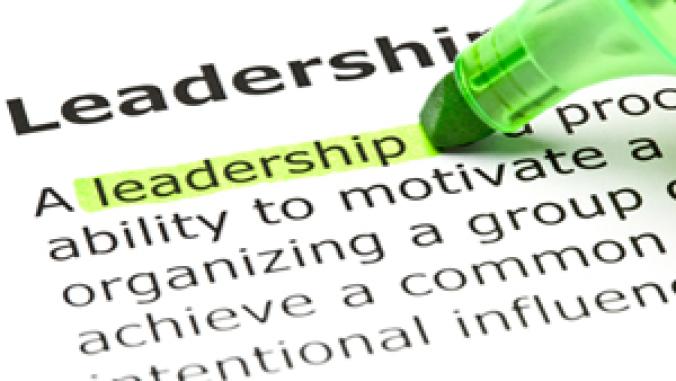How companies capitalize on convergence to speed sustainability
<p>The value of convergence is not lost on sustainability professionals. How can they help others understand the concept and accelerate sustainability efforts? That's a key theme at VERGE DC.</p>

The value of convergence is not lost on sustainability professionals. As seen with more progressive management concepts, the coming together of various systems, processes and disciplines can bring strong results when working toward any number of goals.
Consider then the impact of convergence when it's applied to physical sites (buildings, campuses and whole cities), energy (the existing grid, renewable energy systems and the developing smart grid), transportation (cars, traffic management, logistics and transport system design) and technology. Technology provides the information and the insights that make it possible to better manage those broad areas and connect them so that they function well together as part of a larger system.
What you have then is a "convergence of convergences," says GreenBiz Chairman and Executive Editor Joel Makower. GreenBiz calls that vision VERGE, and its broad potential to influence and improve the built environment is being explored this week at the VERGE DC conference. The gathering in Washington, D.C., is the first VERGE conference for 2012 and follows the inaugural VERGE series in 2011 that was held in Shanghai, London and San Francisco.
Makower opened the conference yesterday afternoon with an overview of the VERGE concept from its core, the four broad areas that are united and informed by technology ...

... to the potential to influence the operations and organization of every link in the business value chain, including ...

.. and how that will shape companies' business relationships with partners ...

Conference sessions today and tomorrow will provide deeper dives into each of those areas. (Key talks are being livecast and are available free with registration via Virtual VERGE.)
The first panel of the conference offered a look at the state of convergence today, what early adopters among major mainstream companies are doing, where everybody else is and some of the things that can done to bring the rest of the business world up to speed.
Dave Bartlett, IBM's vice president of Industry Solutions, is known within his company and among many of its clients as the "building whisperer" As he likes to say, buildings are talking -- the question is: Are you listening to and understanding them?
More often than not, the answer is no.
But that's changing, said Bartlett, a speaker at the conference's kickoff panel this afternoon. He was joined by David Pogue, global director of sustainability for real estate services firm CBRE, Don Reed, director of sustainable business solutions at PwC, and Saul Zambrano, senior director of products for customer energy solutions at Pacific Gas and Electric Company, in a talk moderated by Makower.
The power of convergence
"There has been this proliferation of smart sensor technology and digital control systems," said Bartlett. "Buildings [can be] really well instrumented and they are talking to us. When we start listening holistically, we begin to better understand what those buildings are doing ... and you can heal them of the wild energy and water wasting ways."
How much?
According to Bartlett, companies can save as much as 40 percent of the energy and 50 percent of the water they'd typically use by culling data on resource consumption and occupancy in buildings. Analyzing that information, enables owners and operators to optimize the performance of their buildings. The same goes for other systems in the built environment, said Bartlett, who noted a proliferation of tech solutions also exists for transportation, cities and infrastructure.
When asked by Makower about the market for such solutions, Bartlett pointed to the Smart2020 report, saying that some $340 billion in energy expenses worldwide could be averted by 2020, if people applied technology available today to improve energy efficiency.
A reality check
"I'm the guy who says this all sounds great, but how the hell do we really do it," said Pogue of CBRE. which manages more than 1.3 billion square feet of property for institutional and corporate clients in the Americas.
"I 100 percent agree with the fact that almost every building in America can be managed better than they are today around energy efficiency," Pogue said.
Despite the availability of tech solutions, he and other panelists noted, energy efficiency or lack thereof is a result of long-held practices by the people who occupy buildings.
"Most corporate buildings [in America] are run to the desires and the demands of most demanding occupant,"Pogue said. "It's the attorney on the 35th floor, it's the CEO, it's whoever has the loudest voice or who is going to get you in trouble, or whose lease is expiring the soonest, or whatever. The property manager or the facilities manager is duty bound to make that person happy. Conversely, it [a building] is also managed in the engineering room to the capabilities, generally, of the least capable engineer. "
Combine that with traditional leasing arrangements, in which property owners are disinclined to pay for improvements that provide tenants with cost savings and other benefits, and you have an idea of the barriers to creating smarter, better buildings, let alone convergence.
A lot of dumb things happen in buildings, Bartlett conceded.
Ways to overcome the challenges
There is, however, hope for change, panelists said. Here are some of the points they made:
• The reactive nature of the commercial real estate industry can be leveraged. "Commercial real estate for the most part is a reactive business," said Pogue. As tenant demands influence the market, building owners and operators will respond. "That's where the equation starts," he said.
• Shared information can help drive change, further innovation and better solutions, said Zambrano of PG&E. Recognizing that for now "not a lot of buildings" have sophisticated building management systems, utility data could hold the key to improvement across a wide band of structures, Zambrano said.
For example, PG&E offers customers Green Button access to their utility data, which the customers can use to inform how they manage their energy consumption or they can share that data with a third party that can help them analyze energy use and come up with ways to curb it. Creating a common data access platform for utilities to aggregate such information would go a long way toward scaling up energy efficiency strategies, he said.
• Better information can lead to better engagement, which also drives change. Citing research with the University of California at San Diego, Pogue noted that buildings with separately metered occupants were found to be 21 percent more energy efficient than buildings that had a single utility meter. "That's really about engagement." he said of the results.
• Better understanding of customer needs and expectations is required, and the market leaders get it. Building and energy management companies have to realize that "consumers are saying 'no thanks' to complicated, component-laden systems," said Reed of PwC. "Even in very sophisticated organizations, the desire for this not to be so complicated is very high. They [customers] were saying 'yes' to an optimized system with a clear value proposition."
"But you have to earn the right to call it a solution," Reed said. "It has to solve the [customer's] problem."
In his talk, Makower offered a list questions that companies and the sustainability professionals in them should consider when contemplating convergence -- as a solutions provider or as a firm trying to remain competitive in a changing landscape:

Videos about Makower's talk, the panel and other keynote presentations will be available at GreenBiz.com, along with news coverage of the event.
Photo of high rises via Shutterstock.com.
Attend VERGE DC via Virtual VERGE.





